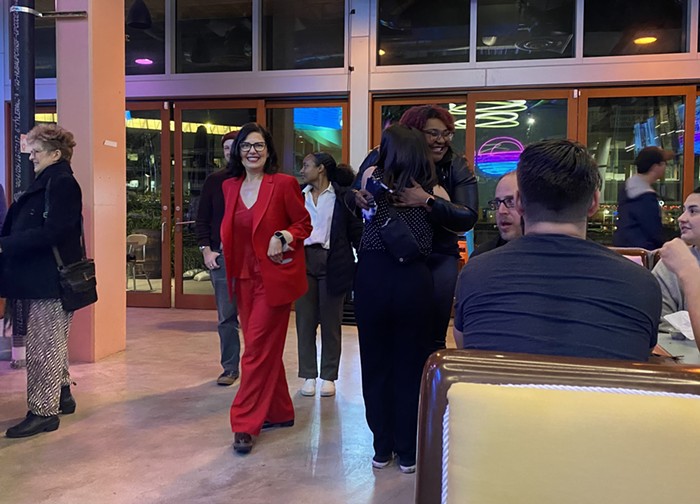A portrait is how you see someone. It's how you want someone else to see them, too. Later, when someone looks at it, they see who you saw, but also they see you, your understanding or your not, your limits and flaws, you wrestling with your seeing and not seeing right.
Double Exposure, now on exhibit at Seattle Art Museum, includes a broad selection of portraits by Edward S. Curtis, and it will make you think about what it is to see someone, to make an image, who gets to do it when. This is because Curtis's works are displayed in conversation with works by three contemporary Native artists: Will Wilson, Marianne Nicolson, and Tracy Rector.
By the time Curtis began making photographs in Seattle in the 1880s, Native Americans (including Coast Salish, Duwamish, and Suquamish people who had settled the region 4,000 years before) had been sent to reservations and were no longer allowed to live in the city. It took Curtis a while to coax Kikisoblu, the last Native living in Seattle, to let him take her picture. Princess Angeline, as she was known in English, was Chief Seattle's daughter.
In Curtis's photograph, the skin of her forehead and around her mouth is deeply lined, her eyes are looking somewhere else. Is she far away, remembering? Does she see, the way the young man can't, what the future holds? Does she know it will end in greed and murky skies, in crap-filled lakes and rich people pushing poor people out, and poor people living in tents, on streets and sidewalks, without homes?
Curtis was 28 when he took that photograph, and many more like it followed—more than 40,000 photos of people from more than 80 tribes. It's an archival body of work that has been both praised for its breadth and power, and maligned for its narrative stance. He included props and costumes within the frame that didn't necessarily belong to the person whose portrait he was taking. His images defined Native Americans for generations.
But you should see what SAM has done with Double Exposure. The jolts between Curtis's "noble" (his word) Natives in traditional dress (their own or others') standing near the lively, light-filled, trickstery art of Wilson, Rector, Nicolson is just exhilarating.
Wilson's amazing talking tintypes invite you and your smartphone to hear the words of contemporary Native artists, educators, and community folks in what amounts to your own private movie. Rector's community-centered films talk back to the lonely solitude of Curtis's portraits by showing groups of young and old Native folks gathered at the shore, paddling together in canoes (amazing camera angle—canoers seen from the water), having fun. Nicolson's sculptures in light and glass evoke the community between people and planet, people and cosmos.
When you walk into the exhibit, Nicolson's is the first piece you'll see. Look at it, but also look down and up, to see what it does above you, what it is saying about the sky, about things above and below you coming together or apart.
When you meet someone and look at them, does that bring you together or apart? When you look at someone only once, it's once. Look, look again. Imagine you are telling each other who you are.


















